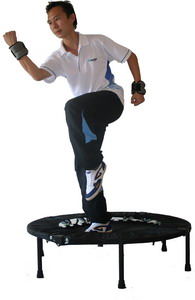18.5 - 24.9 = Normal
25 - 29.9 = Overweight
> 30 = Obesity



If time permits, I would like to sign up for a proper course. It was good exercise :)
- Beatty Sec
- Beatty Sec
- Beatty Sec
- ICA
- CHIJ St Nicholas Girls School
There were so many moves of self-defense. Coaches are very nice. This rocks!
- Northland Primary
- CHIJ St Nicholas Girls School
Coach make us feel “Taichi"
- Hong Wen School
I want to learn more advanced Taichi.
- Hong Wen School
- Princess Elizabeth Primary
The coach is very good in Wushu, I would like to continue learning.
- Princess Elizabeth Primary
- Princess Elizabeth Primary
Read More >>
(WORD COUNT: 829)

We need to understand that our bone is not just a hard and lifeless structure. In fact, it is a very complicate living tissue. Our bones provide structural support for our muscles, protect our vital organs, and store the calcium essential for bone density and strength necessary for our daily activities and survival.
As the bones are constantly changing, they can heal by themselves and could even be affected by factors such as diet, nutrition and exercise. According to the growth and development, it is only till the age of around 30 where our body builds and store bone efficiently.
Following which, as part of the natural aging process, our bones start to break down at a much faster rate then new bone can be formed. Bone loss accelerates even faster after menopause in particularly for women, since the ovaries stop producing estrogen, which is the hormone that protects against bone loss.
If we imagine our bones as a savings account without interest of course, we can only have as much bone mass in our account as we deposit through our growth and development stage. The crucial year for developing bone mass is before adolescence to around age 30. It is believed that women in their teens can increment their bone mass by as much as 20 percent with proper nutrition and exercise, where this is a critical factor in preventing against osteoporosis in their later stage in life.
Osteoporosis is the medical term which is used to describe bones with lots of big holes. Osteo refer to bone, while porosis refers to containing pores. It is known that all human bones do contain holes and osteoporosis refer to having more and bigger holes or pores than what is desired. It is the thinning of the bones with reduction in bone mass due to depletion of calcium and bone protein.
According to National Osteoporosis Foundation (www.nof.org), in the United States, 8 million women and 2 million men have osteoporosis. An additional 34 million Americans currently have low bone mass. It is also estimated that about half of women and one-fourth of men aged 50 and above will suffer osteoporosis-related fracture within their lifetim
Osteoporosis is also responsible for about 2 million fractures (broken bones) each year in men and women above 50 years old. The most common locations where fractures occur are the hip, vertebral, and wrist, where they often require hospitalization and major surgery. They may also lead to other serious consequences, including permanent disability and death.
This condition is found most prevalently in astronauts, senior citizens and those who are bedridden. The reason is due to the fact that bones become stronger under stress and lose its strength when there is no stress. The main form of stress which our body is acting under is Gravity, which is the natural opposition of reaction force that helps to keep our bone strong and healthy.
Almost all forms of exercises will help to strengthen the bone under normal healthy body conditions. However, when one is found to be suffering from osteoporosis, it is advisable to exercise under caution to minimize any instantaneous trauma and impact on the weight bearing joints.
Weight bearing exercises refer to those which force your body to work against gravity and add stress to your body and bones. Recommended forms of exercises by the National Osteoporosis Foundation include Taichi, walking, jogging; weight training and rebounding exercise are very beneficial to bone strengthening. When one is at risk or already having osteoporosis, besides taking medication, the doctor will most likely include exercises as part of the overall treatment program.
The next question comes to deciding which form of exercises is most beneficial. As mentioned in the earlier paragraph, walking, jogging and running is all very good form of weight bearing exercises, provided proper posture alignment is adopted and habitualised. When running with poor body posture and technique, it can add unnecessary stress to the joints, especially on the knee, which is undesirable.
Rebounding exercise using the trampoline offers a more convenient form of weight bearing exercises with the major advantage of its low impact level to the different body joints.
Exercises alone cannot help in preventing or cure osteoporosis, but rebounding exercises or other form of weight bearing exercises together with proper nutrition and medication as prescribed by the doctor is essentially important for maintaining osteoporosis. However, like in all form of exercises, it has to be done on a regular basis to be of positive value.
- Develop bone to become more mineralized, denser and stronger
- Develop balance and core stability
- Develop good posture and alignment
- Improves cardiovascular fitness
- Improves body coordination
- Improve bone mass & strength
- Strengthen muscles, especially in the lower leg & pelvic
- Protects the joints from chronic fatigue and impact delivered by exercising on hard surface
- Maintain homeostasis
- Increase lymphatic system circulation

 Multivitamin Drink
Multivitamin Drink
 More info >>
More info >>
 More info >>
More info >>
 Sports Massage Therapy
Sports Massage Therapy